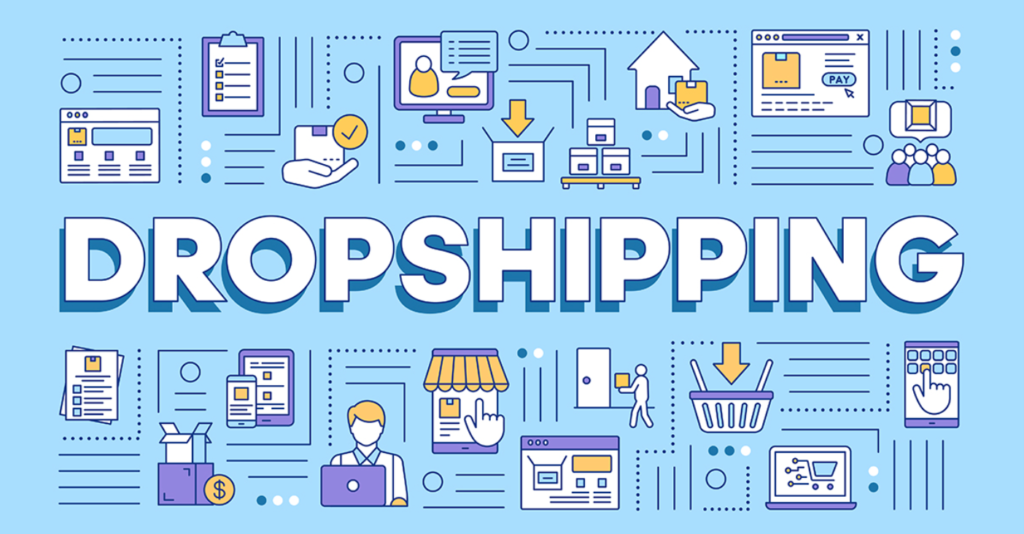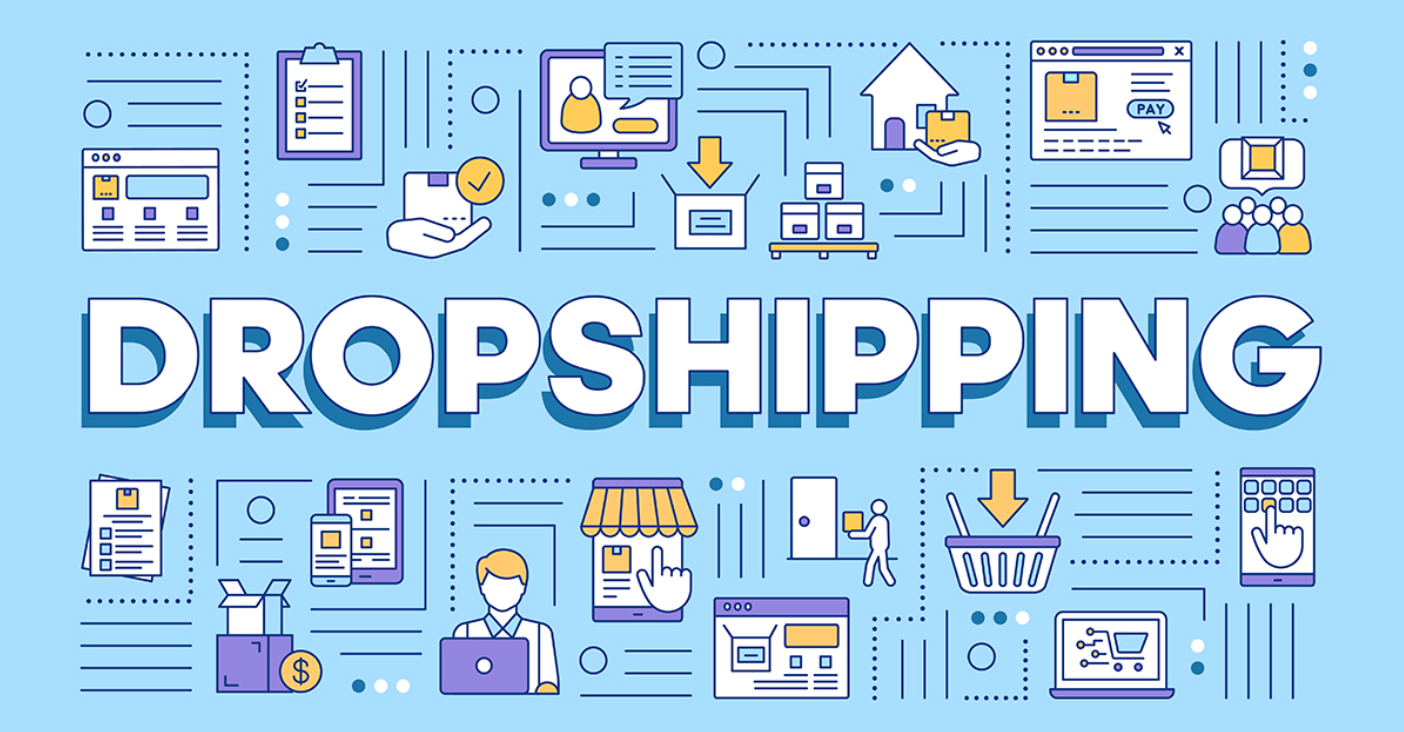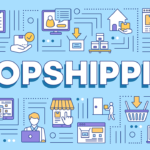1. Introduction
Starting a dropship business from home can be an exciting and profitable venture. Dropshipping allows you to sell products without the need to keep an inventory, making it a low-risk and cost-effective business model. In this comprehensive guide, we will walk you through the step-by-step process of setting up and running a successful dropship business from the comfort of your own home.
2. Choosing a Profitable Niche
To kickstart your dropship bisnes mudah, it’s crucial to choose a profitable niche. By focusing on a specific product category or market segment, you can better target your audience and stand out from the competition. Here are the key factors to consider when selecting your niche:
2.1 Identifying Market Demand
Begin by researching the market demand for various product categories. Look for popular trends, emerging markets, and products with high consumer demand. Analyze online search volumes, social media discussions, and industry reports to identify potential niches that align with your interests and have a sizable market.
2.2 Evaluating Competition
While competition is a healthy sign of market viability, it’s essential to assess the level of competition within your chosen niche. Conduct competitor analysis to understand who your main competitors are, their pricing strategies, marketing tactics, and unique selling points. This information will help you differentiate your business and develop a competitive edge.
2.3 Assessing Profitability
Evaluate the profitability of your chosen niche. Consider factors such as product cost, potential profit margins, and the average order value. Research the pricing strategies of your competitors to determine if there’s room for you to offer competitive prices while maintaining profitability. Additionally, assess the market’s long-term growth potential to ensure sustainability for your business.
3. Finding Reliable Suppliers
Partnering with reliable suppliers is crucial for a successful dropship business. These suppliers will handle inventory storage and shipping, allowing you to focus on marketing and customer service. Here’s how you can find reputable suppliers:
3.1 Online Directories and Marketplaces
Utilize online directories and marketplaces dedicated to connecting dropshippers with suppliers. Platforms like AliExpress, SaleHoo, and Worldwide Brands offer extensive lists of verified suppliers across various product categories. Explore these directories, read reviews, and assess supplier ratings to find reliable partners for your business.
3.2 Contacting Manufacturers
If you have specific products or brands in mind, consider reaching out to manufacturers directly. Manufacturers often have dropshipping programs in place or can provide you with a list of authorized distributors who offer dropshipping services. Contact them via email or phone to inquire about their dropshipping policies, requirements, and product availability.
3.3 Evaluating Supplier Criteria
When evaluating suppliers, consider several key criteria:
- Product Quality: Ensure that the supplier offers high-quality products that meet your standards. Request product samples if necessary.
- Shipping Times: Timely delivery is crucial for customer satisfaction. Inquire about the supplier’s shipping times and confirm that they can meet your customers’ expectations.
- Return Policies: Understand the supplier’s return and refund policies. Ensure they align with your business’s return policies and customer expectations.
- Pricing: Compare the pricing of different suppliers for the same products. Remember that pricing affects your profit margins and competitiveness.
- Communication: Prompt and effective communication with your supplier is essential. Evaluate their responsiveness and willingness to address your queries and concerns.
By carefully selecting reliable suppliers, you can establish a strong foundation for your dropship business and ensure a smooth order fulfillment process.
4. Setting Up Your Online Store
Now that you have your niche and suppliers in place, it’s time to set up your online store. Your store will serve as the primary platform for showcasing and selling your products. Follow these steps to create an appealing and user-friendly online store:
4.1 Choosing an E-commerce Platform
Select an e-commerce platform that suits your needs and technical expertise. Popular platforms like Shopify, WooCommerce, and BigCommerce offer user-friendly interfaces and a wide range of customization options. Consider factors such as ease of use, available features, pricing, and integration capabilities when making your decision.
4.2 Customizing Your Store
Customize your store to reflect your brand and create a unique shopping experience for your customers. Pay attention to the following elements:
- Store Design: Choose a visually appealing and responsive theme that aligns with your brand image. Customize colors, fonts, and layout to create a cohesive and professional look.
- Logo and Branding: Design a logo that represents your brand and place it prominently on your website. Consistent branding throughout your store helps build recognition and trust.
- Navigation and Categories: Organize your products into clear and intuitive categories. Make it easy for customers to find what they’re looking for by implementing a user-friendly navigation menu.
- Product Imagery: Use high-quality product images that accurately represent your products. Include multiple images from different angles, zoom features, and even videos if possible.
- Payment and Security: Integrate secure payment gateways to offer a seamless checkout experience. Display trust badges, SSL certificates, and privacy policies to reassure customers about the security of their information.
4.3 Optimizing for User Experience
Create a smooth and user-friendly experience for your visitors to increase conversions and customer satisfaction:
- Mobile Responsiveness: Optimize your store for mobile devices to cater to the increasing number of shoppers using smartphones and tablets.
- Page Loading Speed: Ensure your website loads quickly by optimizing image sizes, minimizing code, and utilizing caching plugins.
- Clear Product Descriptions: Write clear and concise product descriptions that highlight the key features and benefits. Use bullet points, headings, and formatting to enhance readability.
- Intuitive Checkout Process: Simplify the checkout process by minimizing the number of steps required. Offer guest checkout and multiple payment options to accommodate customer preferences.
- Customer Reviews: Implement a customer review system to build trust and social proof. Encourage customers to leave reviews and display them prominently on your product pages.
By investing time and effort into creating an attractive and user-friendly online store, you’ll enhance the overall shopping experience and increase the chances of converting visitors into paying customers.
5. Sourcing Products and Listing Them
Now that your online store is ready, it’s time to source products from your suppliers and list them on your website. This process involves selecting products, importing relevant information, writing compelling descriptions, and optimizing your product listings for maximum visibility. Follow these steps to effectively source and list your products:
5.1 Selecting Products from Suppliers
Review your suppliers’ inventory and select the products you want to offer in your store. Consider factors such as product popularity, profit margins, and alignment with your target market. Focus on a curated selection of products that complement your niche and cater to your customers’ needs.
5.2 Importing Product Information
To streamline the process of listing products, most e-commerce platforms provide tools to import product information from your suppliers. These tools allow you to automatically import product images, titles, descriptions, and other relevant details. Ensure that the imported information is accurate and error-free.
5.3 Writing Compelling Descriptions
While imported product descriptions may provide basic information, it’s essential to craft compelling and unique descriptions that engage your customers. Keep the following tips in mind:
- Know Your Audience: Understand your target audience’s needs, desires, and pain points. Highlight how the product solves a problem or fulfills a desire.
- Focus on Benefits: Instead of just listing features, emphasize the benefits customers will experience by using the product. Describe how it improves their lives or addresses their concerns.
- Use Persuasive Language: Use persuasive language to evoke emotions and create a sense of urgency. Incorporate power words, storytelling elements, and calls to action to entice customers to make a purchase.
- Be Clear and Concise: Keep your descriptions concise while conveying all the necessary information. Use bullet points, subheadings, and formatting to enhance readability.
5.4 Optimizing Product Listings
Optimizing your product listings for search engines is crucial for visibility and organic traffic. Implement the following techniques to improve your product’s search rankings:
- Keyword Research: Identify relevant keywords that your target audience is likely to search for. Incorporate these keywords naturally into your product titles, descriptions, and meta tags.
- Unique Titles: Craft unique and descriptive titles for each product. Include important details such as brand, model, and key features.
- Detailed Product Attributes: Provide detailed product attributes, such as size, color, material, and dimensions, when applicable. This helps search engines understand your product and improves the chances of appearing in relevant search results.
- Meta Tags and Alt Text: Write compelling meta tags and alt text for your product images. These elements contribute to search engine optimization and improve the accessibility of your website.
By sourcing high-quality products, writing compelling descriptions, and optimizing your product listings, you’ll increase the visibility of your store and attract potential customers.
6. Marketing Your Store
To generate traffic and sales, effective marketing strategies are essential. Promoting your dropship business through various channels will help you reach your target audience and build brand awareness. Here are some key marketing strategies to implement:
6.1 Developing a Marketing Strategy
Before diving into specific marketing tactics, it’s crucial to develop a comprehensive marketing strategy. Define your goals, target audience, and key performance indicators (KPIs). Create a budget and allocate resources to different marketing channels based on their potential ROI. Set a timeline and regularly evaluate your marketing efforts to make data-driven decisions.
6.2 Utilizing Social Media
Social media platforms offer immense opportunities to connect with your audience, build brand loyalty, and drive traffic to your store. Here’s how you can leverage social media effectively:
- Choose Relevant Platforms: Identify the social media platforms where your target audience is most active. Facebook, Instagram, Twitter, Pinterest, and LinkedIn are popular options.
- Create Engaging Content: Develop a content strategy that aligns with your brand and resonates with your audience. Share informative blog posts, captivating images, videos, customer testimonials, and behind-the-scenes content to engage your followers.
- Engage with Your Audience: Actively participate in conversations, reply to comments and messages, and encourage user-generated content. Build a community around your brand by fostering meaningful interactions.
- Run Paid Ad Campaigns: Utilize social media advertising to reach a wider audience and drive targeted traffic to your store. Set clear objectives, define your target audience, and create compelling ad visuals and copy.
6.3 Implementing Content Marketing
Content marketing involves creating and distributing valuable content to attract and engage your target audience. By providing informative and relevant content, you position yourself as an authority in your niche and build trust with your audience. Consider the following content marketing tactics:
- Start a Blog: Create a blog on your website and regularly publish articles related to your niche. Write helpful guides, product reviews, industry news, and tips that provide value to your readers.
- Guest Posting: Contribute guest posts to industry-related blogs and publications to expand your reach and build backlinks to your website. Ensure that the publications you choose have an audience that aligns with your target market.
- Video Marketing: Create videos showcasing your products, providing tutorials, or sharing industry insights. Publish them on platforms like YouTube or embed them on your website and social media channels.
- Infographics and Visual Content: Visual content, such as infographics, can convey complex information in a visually appealing and shareable format. Create informative infographics that relate to your products or industry and share them on social media and relevant websites.
- Email Newsletters: Build an email list and send regular newsletters to your subscribers. Share new product updates, exclusive offers, helpful content, and personalized recommendations. Personalize your emails based on customer preferences and behavior to enhance engagement.
6.4 Search Engine Optimization (SEO)
Search engine optimization is crucial for improving your website’s visibility in search engine results. By optimizing your content and website structure, you can attract organic traffic and increase your chances of ranking higher. Focus on the following SEO practices:
- Keyword Research: Conduct keyword research to identify relevant keywords for your niche. Incorporate these keywords naturally into your website content, including product descriptions, blog posts, and meta tags.
- On-Page Optimization: Optimize your website’s on-page elements, including title tags, meta descriptions, headings, and URLs. Ensure they are descriptive, concise, and include relevant keywords.
- Quality Content: Produce high-quality and informative content that aligns with user intent. Focus on creating valuable content that answers questions, solves problems, and provides insights for your target audience.
- Link Building: Build quality backlinks to your website by reaching out to industry influencers, guest posting on reputable websites, and utilizing content marketing strategies. High-quality backlinks enhance your website’s authority and improve search engine rankings.
6.5 Paid Advertising
Paid advertising allows you to reach a broader audience and drive targeted traffic to your online store. Here are some popular paid advertising channels you can consider:
- Search Engine Advertising: Utilize platforms like Google Ads and Bing Ads to display targeted ads to users searching for relevant keywords. Set a budget, define your target audience, and create compelling ad copies to maximize your ROI.
- Social Media Advertising: Leverage the targeting capabilities of social media platforms to reach your ideal customers. Create visually appealing ad creatives, set specific targeting parameters, and monitor your campaigns to optimize performance.
- Influencer Marketing: Collaborate with influencers in your niche who have a significant following. Partner with them to promote your products through sponsored posts, reviews, or giveaways. Ensure that the influencers you choose align with your brand values and have an engaged audience.
6.6 Building an Email List
Email marketing is a powerful tool for nurturing customer relationships and driving repeat business. By capturing visitor email addresses, you can establish direct communication and leverage email campaigns to promote your products and offers. Consider the following strategies to build and engage your email list:
- Opt-In Forms: Place opt-in forms strategically on your website to encourage visitors to subscribe to your newsletter or receive exclusive offers. Offer incentives, such as discounts or freebies, in exchange for email addresses.
- Segmentation: Divide your email list into segments based on demographics, purchase history, or engagement levels. Send targeted emails that cater to each segment’s interests and needs.
- Personalization: Personalize your emails by addressing subscribers by their names and tailoring the content to their preferences. Use automated email marketing tools to set up personalized email flows based on specific triggers or actions.
- Engagement Campaigns: Send regular newsletters, product updates, and personalized recommendations to keep subscribers engaged. Offer exclusive discounts, rewards, or early access to new products to encourage repeat purchases.
By implementing a well-rounded marketing strategy that combines social media, content marketing, SEO, paid advertising, and email marketing, you’ll attract a steady stream of visitors to your online store and convert them into loyal customers.
7. Managing Customer Orders
Efficient order management and timely order fulfillment are crucial for customer satisfaction. As a dropshipper, you rely on your suppliers to handle the fulfillment process. However, it’s important to stay involved and ensure smooth operations. Here’s how you can effectively manage customer orders:
7.1 Order Fulfillment Process
Communicate with your suppliers to establish clear processes for order fulfillment. Ensure that they receive the order details promptly and ship the products within the agreed-upon timeframe. Monitor the status of orders and maintain regular communication with your suppliers to address any potential issues or delays.
7.2 Tracking Shipments
Provide order tracking information to your customers to keep them informed about the status of their shipments. Most suppliers offer tracking numbers that you can share with your customers. Utilize order tracking tools or integrate tracking features into your e-commerce platform to streamline this process.
7.3 Communication with Customers
Maintain open lines of communication with your customers throughout the order fulfillment process. Send order confirmations, shipping notifications, and delivery updates via email or SMS. Be responsive to customer inquiries and provide timely and accurate information to ensure a positive customer experience.
8. Providing Excellent Customer Service
Delivering exceptional customer service is vital for the success of your dropship business. By providing prompt and professional support, addressing inquiries and concerns, and resolving issues effectively, you can build customer trust and loyalty. Here’s how you can provide excellent customer service:
8.1 Prompt and Professional Support
Respond to customer inquiries and support requests promptly. Set clear expectations for response times and ensure that your customer support team is well-trained to handle various situations. Utilize customer support software or ticketing systems to track and manage customer inquiries efficiently.
8.2 Addressing Inquiries and Concerns
Listen attentively to customer inquiries and concerns, and provide helpful and accurate information. Empathize with their concerns and offer solutions or alternatives when issues arise. Be proactive in resolving problems and follow up to ensure customer satisfaction.
8.3 Product Knowledge and Expertise
Develop a thorough understanding of the products you offer. Stay updated with product information, industry trends, and any changes that may affect your customers. This knowledge will enable you to provide accurate and valuable guidance to your customers and establish yourself as a trusted resource.
8.4 Customer Feedback and Reviews
Encourage customers to leave feedback and reviews on your website or review platforms. Monitor and respond to customer reviews, whether positive or negative, to show that you value their opinions. Use customer feedback to improve your products, services, and overall customer experience.
8.5 Loyalty Programs and Special Offers
Implement loyalty programs or offer special discounts and incentives to reward repeat customers and encourage customer loyalty. Create personalized offers based on customer preferences and purchase history to make them feel valued and appreciated.
By providing exceptional customer service, you can differentiate your dropship business from competitors and foster long-term relationships with your customers.

Conclusion
Starting a dropship business from home offers exciting opportunities for entrepreneurs looking to enter the e-commerce industry. By selecting the right niche, sourcing reliable suppliers, setting up an appealing online store, implementing effective marketing strategies, and delivering excellent customer service, you can build a successful and profitable dropship business. Stay dedicated, adapt to market trends, and continuously optimize your operations to stay competitive in the dynamic world of e-commerce.
For more information please visit https://nurraysa.com/cara-memulakan-bisnes-online-mudah-suri-rumah-perniagaan/









